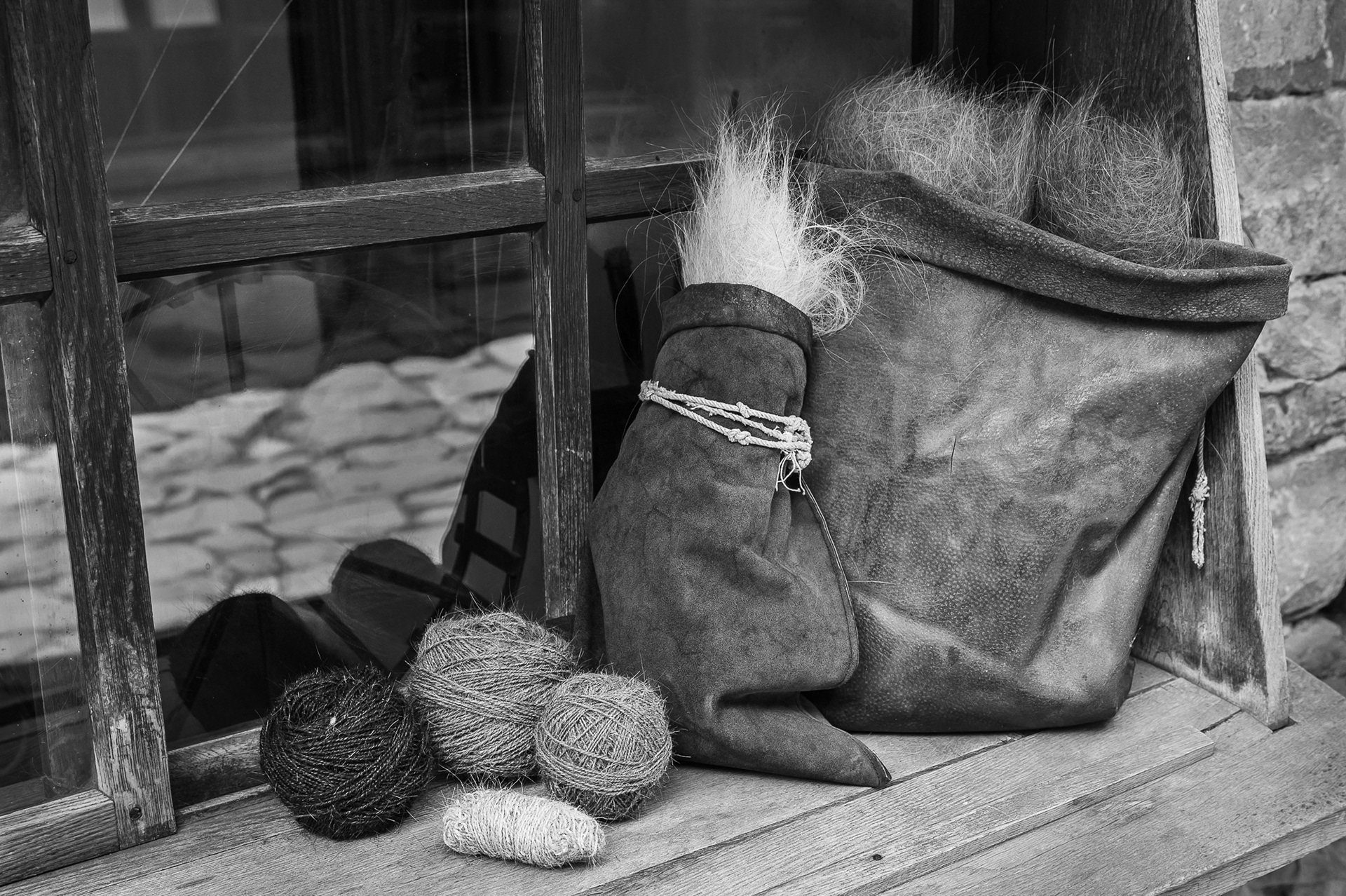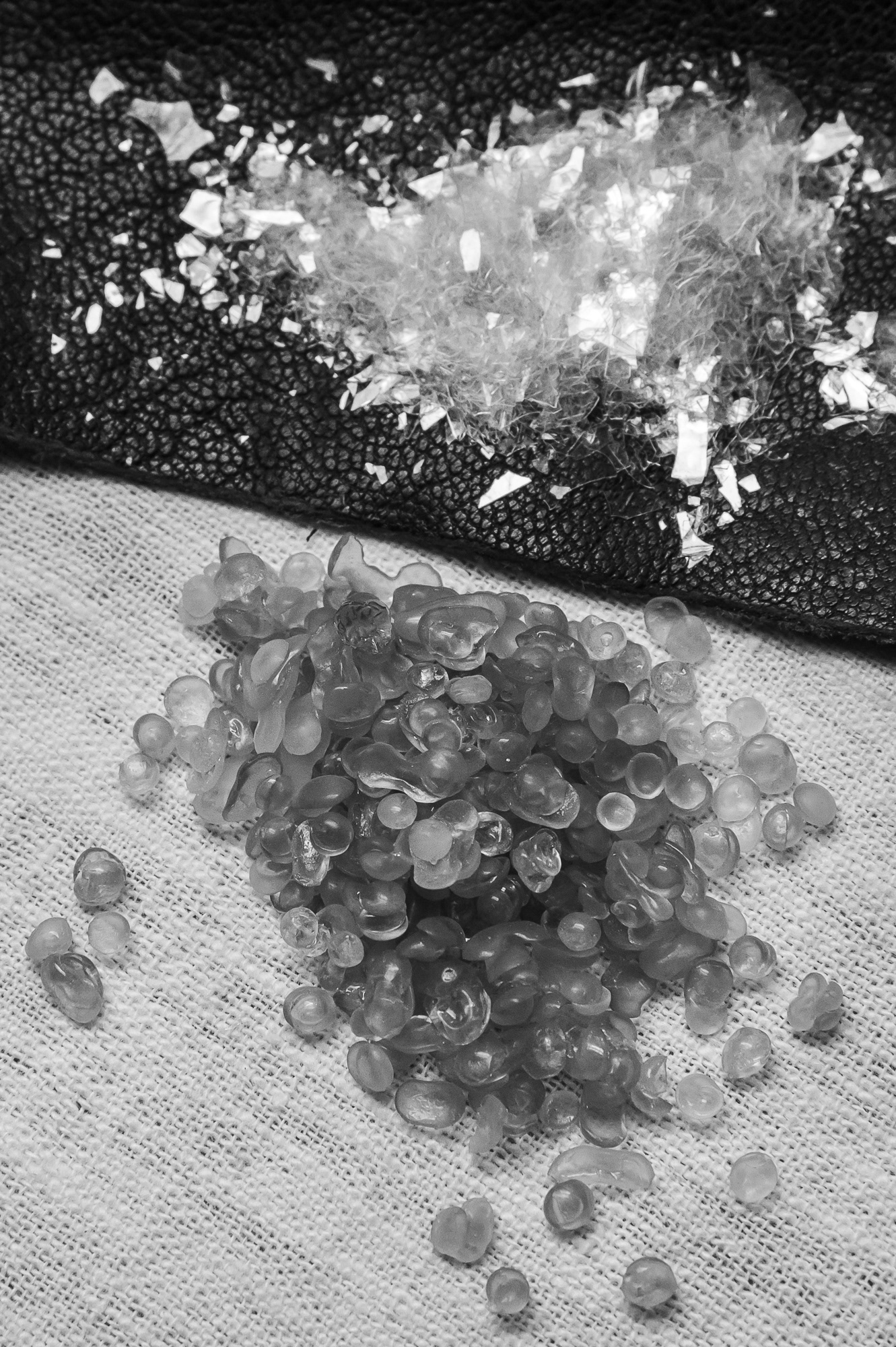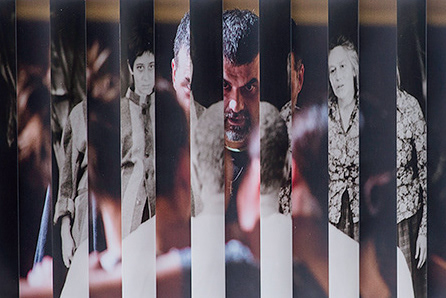Published: 07.10.2022
Creative concept and photography: Rosina Pencheva
Text: Maria Boncheva
Creative concept and photography: Rosina Pencheva
Text: Maria Boncheva
Skilled Artisans of Rare Crafts
Under the circumstances of an increasingly digitized daily round, the issue of the preservation and future of manual labor as a sustainable livelihood and as part of the cultural heritage of a given nation, has gained in relevance. In this sense, Crafted by Hand shines the spotlight on master craftspeople who have chosen to devote their lives to professions practiced by only few in this country, and in some cases even worldwide. Using the format of a photo diary with supplemented texts for each master and his craft, Crafted by Hand presents six documentary photo series featuring some of the rarest crafts in Bulgaria. The photographs capture the face behind the craft, the environment at work, the specific tools, the creative process and some of their finished works. The goal and mission of Crafted by Hand is not only to give greater publicity to these rare occupations, but also to recall the need for the preservation and development of the crafts typical of Bulgaria. With their craftsmanship and artistic worth, the products of manual labor are part and parcel of the Bulgarian national heritage and identity and may serve as an excellent promotional tool to present the country to the rest of the world.











Behind the Camera
The mastermind and ideologist of Crafted by Hand is Rosina Pencheva – a visual artist. Her mission is to put focus on the Bulgarian cultural heritage, its value and preservation, by using the means of expression that photography offers. Her professional experience with photographing handicrafts and the creative processes involved, started back in 2013. For more than four years, she worked as a museum photographer at Etar Regional Ethnographic Open-Air Museum (Gabrovo, Central Bulgaria) where from she inherited her mission as an ambassador of Homo Faber, the international network of artisans in handicrafts at the Michelangelo Foundation.
Gifts and Skills
Crafted by Hand features six handicrafts selected on the basis of historical reference and an analysis of the current situation. Each of the crafts is currently practiced at a high professional level by not more than ten people in this country. During the selection of the six masters, Rosina Pencheva has been guided by the eleven criteria of artisanal excellence formulated by Alberto Cavalli, the CEO of Michelangelo Foundation, namely, authenticity, competence, craftsmanship, creativity, innovation, interpretation, originality, talent, territory, tradition and training (Cavalli 2018).
Following a long and tough selection, the six artisans whom Crafted by Hand presents include:
Hristo Totsev (39 y.o., Gabrovo), certified dry stone waller;
Petar Paunov (73 y.o., Gabrovo), master coppersmith;
Georgi Todorov-Getz (51 y.o., Sopot), master tobacco-pipe maker;
Hristo Marinov (67 y.o., Gabrovo), master of goat-hair weaver;
Stopan (31 y.o., Sofia), artist and master bookbinder;
Deyan Denchev (49 y.o,. Razgrad), master luthier, maker of gadulka (rebec) stringed instruments.
Spinning (twisting and winding fibers into a continuous thread) of fur, a process of the goat-hair working
A Message of Continuity
The six portrayed masters are of different ages – from 31 to 73 y.o., and all of them are open to training others in their craft. It is exactly the continuity between generations that is the keystone not only for preserving traditions, but also for cultivating an attitude towards manual work in young people. This is also a way to create an auspicious, and why not sustainable market environment, in which artistic handwork claims its well-deserved place.





Masters of the Craft
All six masters meet the criteria of authenticity, competence, craftsmanship (they possess master certificates), talent, training. Most of them are entirely or almost entirely self-taught in their trade, but have other vocational or university education. Only the two oldest masters, aged 67 and 73, have gone through the traditional apprentice-senior apprentice-mastertraining method, and both were previously trained at secondary vocational schools. Four of them have passed on or are passing on their craft, and the oldest master, Petar Paunov, has trained 15 people. Almost all of them have either introduced or seek to introduce innovations to the tooling and/or to the articles themselves. Under the criterion of tradition, the most distinguished master is goat-hair artisan Hristo Marinov – his craft has practically no commercial value, with only few exceptions, and is preserved at the goat-hair working workshop at Etar Museum. With a view to the criterion of territory, we should distinguish gadulka (rebec)-making which is strictly specific for this country (and for some parts of Bulgaria’s western neighbors), and tobacco-pipe making which originated in this country 20-25 years ago stepping on the traditions of this handicraft in the rest of Europe.
The Boom and Bust of Handicrafts
The Bulgarian crafts peaked during the National Revival era as a result of accumulated craftsmanship experience and continuity. Before industrialization, traditional crafts and home occupations supplied the needed household and everyday items, and in the meantime, the practical and the artistic-aesthetic aspects (in the more distant past, the ritualistic-ceremonial ones) were not separated.
After the Liberation, crafts began to decline, and some disappeared completely, displaced by industrial goods. The process deepened, and in the 1970s, the fusion of traditional crafts that had practical functions, with artistic crafts which sported a primarily artistic and symbolic worth, became imperative as a measure for their preservation.
Crafts at Risk
The list of the so-called crafts at risk in which the transfer of the tradition or the knowledge and skill of crafting the respective item is put at risk due to a critically low number of practicing artisans, has continued to grow. While some crafts, such as weaving and pottery, are seeing a renaissance of sorts, others have fallen into further decline. Yet there is hope in case timely action is taken: according to researchers, "risk is a state of preventable catastrophe" (Kabakov et al 2015).
Continuity
The main reasons that prompt an activity to die out, combine the lack of demand for its products and the interruption of its continuity. An interesting correlation has made itself evident: self-taught and hereditary craftspeople are generally open to passing on the craft. Hereditary masters however, are more likely to be unwilling to teach, either because they no longer see a need for the craft, or because they want to keep the skills within the family, and often there is no reciprocated interest from the younger generations.














In the Context of the Times
The spirit of the times fuels an even greater blurring of boundaries between craft and art, between the individual creative pursuits of an artisan and the tradition. In expert literature, it is assumed that the permissible author's interpretation is 50 percent (Kabakov et al 2015). In this way, traditional knowledge is preserved while the craft has been given the opportunity to develop.
A Look Into the Future
Is there a sustainable future ahead for the rare handicrafts and for crafts in general? A gleam shines in the eyes of the six masters. Would they continue to lean on their muse, if they lose hope? At the same time, their eyes spell many questions, some of them unspoken, but all of them provoked by the vicissitudes they face in their experience. There is a lack of a national strategy for the preservation, support, development and perpetuation of crafts, at a time when it is needed urgently. Presenting the craftsmen and their works at a close-up, Crafted by Hand seeks to recall how much of being human is actually the use, touch and contact with the objects of manual labor. The six stories from the photo diary invite us to rethink our attitude towards handicraft products – as consumers, and why not as masters as well.
REFERENCE:
• Kabakov et al 2015: Ив. Кабаков и др. Културният потенциал на народните и художествените занаяти. София, 2015. (Iv. Kabakov i dr. Kulturniyat potentsial na narodnite i hudozhestvenite zanayati. Sofiya, 2015).
• Cavalli 2018: A Cavalli. The Master's Touch: Essential Elements of Artisanal Excellence. Venice, 2018.
• Cavalli 2018: A Cavalli. The Master's Touch: Essential Elements of Artisanal Excellence. Venice, 2018.
Explore an individual story of each master artisan monthly from November 2022 until April 2023 on the pages of this website and in Eight printed magazine.
PROJECT
Crafted by Hand. Photo Diary (2022)
CREATIVE CONCEPT & PHOTOGRAPHY
Rosina Pencheva
TEXT
Maria Boncheva
CRAFTS CONSULTANCY
Rositsa Bineva
GRAPHIC DESIGN
Kostadin Kokalanov
TRANSLATION
Daniela Konstantinova
MEDIA COMMUNICATIONS
Maya Ivanova
DIGITAL CONTENT
Rosina Pencheva
Denislava Dikova (assistant)
PRODUCTION
PARTNERSHIP
CO-FUNDING
2022 Culture Program, Gabrovo Municipality
SPECIAL SUPPORT
Dobrin Kashavelov
Kalin Ruichev
Lyubomira Kostova
Kaloyan Nikolov










